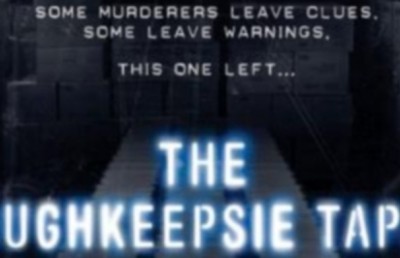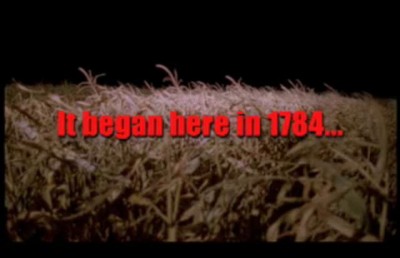A “Taxing” Incentive: The Capital Cost Allowance Films

The Capital Cost Allowance period was an initiative by the Canadian federal government to increase film production by granting 100% tax deductions for money invested into Canadian film. The period began in 1974 but the real peak years were 1978-1980, although the CCA period lasted in one modified form or another until 1988. In many cases the more creative positions (actor, director) were taken up by Americans (although two-thirds of the creative personnel had to be Canadian to qualify for the tax credit). The result was a definite increase in film production, but also a situation where people with no experience or interest in film became ‘producers’ either for the sense of adventure, personal prestigious, or pure economic incentive, since the investment provided a tax shelter by allowing them to deduct 100% of the money invested from their taxable income.
One of the first films made under the CCA was The Silent Partner (Daryl Duke, 1978), an excellent thriller starring Elliot Gould as a mild mannered bank clerk who becomes embroiled in a cat and mouse game with a dangerous criminal, played with menace by Christopher Plummer and starring Quebec bombshell Céline Lomez. The Silent Partner was not only one of the best films of this period, but also set the template (in subject/style if not quality) for many of the subsequent productions. Many films made during the CCA period were, like The Silent Partner, genre films (teen films, horror, comedy) and usually camouflaged their Canadian location for a generic “American” sense of place because they were marketed to a North American rather than an exclusively Canadian audience. In the usual accounts of Canadian film history the films of this period are either neglected, dismissed as commercial junk, or picked at for the odd critically sanctioned gems (The Grey Fox, Phillip Borsos, 1982, Atlantic City, Louis Malle, 1982). Things are starting to change. Younger scholars are looking back at these films with a “more than meets the eye” approach, arguing that this period was too crassly overlooked by earlier film critics and historians. Yes there were some bad films made, and some films made for the wrong reasons, but there were also very good, or at least very entertaining films made.
The condescending attitude toward the films of this period (too commercial, not ‘Canadian’ enough, too “American,” etc.) expose what is at root a greater divide within Canadian films and the Canadian film industry: a self-inflicted ghettoization of Canadian cinema which states that Canadian cinema is documentary, animation (i.e. NFB), or fiction films which overtly identify themselves as films taking place in Canada and ‘about’ Canada. If a film is too popular, or resorts to genre conventions, then it can’t really be ‘Canadian.’ Or, worse yet, it is merely attempting to beat the Americans at their own game. Clearly, a nation of 30 million people can not compete on the same level with a nation with ten times the population. On the other hand, it would be ludicrous to deny the influence of American cinema, both the popular and the more auteurist/artistically inclined variety, on Canadian cinema. Nor is there a reason why Canadian audiences should not expect a range of entertainment from their national cinema that spans similar forms of cinema as our neighbors to the South. I stress similar because a paradigm can have many forms. So for every popular Canadian film that may ‘copy’ an American model, there will be another that either incorporates a strong sense of Canadian identity (such as the film featured in this issue, The Descendant), reflects in equal measure an auteurist sensibility (the horror and science fiction films of David Cronenberg), is influenced by a broader spectrum of popular cinema that includes European cinema (see –or in a more ironic sense, try to see– the films of Karim Hussain, Subconscious Cruelty, Ascension, and La Belle Bête), or can stand up to the horror cinema of any nation (Deathdream, Bob Clark, 1974, Deranged, Alan Ormsby, Jeff Gillen, 1974, Black Christmas, Bob Clark, 1974, The Changeling, Peter Medak, 1979, Pin, Sandor Stern, 1988, Ginger Snaps, John Fawcett, 2000). To borrow from another cultural context, not every western is a western (read: the Italian, usually shot in Spain, spaghetti western). In other words, the Americans (though they are pretty damn good at it) do not have a patent on popular genre (just look at Bollywood, and recent Asian cinemas).
As much as some scholars want to dismiss or overlook the popular films of the CCA period, no amount of blindness will hide the fact that the Canadian popular film played a considerable role in the evolution of one of the more popular and commercially successful cycles of the horror genre, the stalker or slasher film, with a string of seminal films that include Prom Night (Paul Lynch, 1980), Hello Mary Lou: Prom Night 2 (Bruce Pittman, 1987), My Bloody Valentine (George Mihalka, 1982), Humongous (Paul Lynch, 1981), Happy Birthday to Me (J. Lee Thompson, 1980), Terror Train (Roger Spottiswoode, 1980), and Visiting Hours (Jean-Claude Lord, 1981), not to mention the importance to the slasher/stalker cycle of the pre-CCA film, Black Christmas. A recent book by Caelum Vatnsdal charting the history of Canadian horror, They Came From Within (2004), devotes a chapter, entitled “Slash For Cash,” to these most notorious of the CCA period films.
One of the more sobering revisionist accounts of the CCA period comes from Peter Urquhart, who cites the important film historian Peter Morris’ entry on the CCA films in his seminal reference book, The Film Companion: A Comprehensive Guide to More Than 650 Canadian Films & Filmmakers as a symptom of this larger ‘fear of the popular’. Morris dismisses these films because the majority of them were “designed for a mass-market, North American audience, not a Canadian one….” (p. 55). As Urquhart notes, “What exactly differentiates a ‘mass-market, North American audience’ from a Canadian one appears to be a question that does not trouble Morris in the slightest, nor does the matter of what makes a film Canadian, ‘in any real sense’” (p. 68). By taking a closer look at these films Urquhart reveals an interesting thematic undercurrent in many of them, one which incorporates the very issue being debated directly or indirectly in discourses around the CCA period: the age-old scuffle between art and commerce. In many films from the CCA period the question of ‘selling out’ is played out in the narrative dynamic and characterizations.
…while it may be true that Canadian locations masquerade as American ones more often than not, and that teen sex comedies, such as Pinball Summer (George Mihalka, 1979), or horror films, such as Prom Night, do not contain any overtly ‘Canadian’ imagery or themes, the recurrent thematic preoccupation with “selling out,” evident in the tax-shelter-boom films, is striking. Again and again, films of the period return to conflicts between earnest, maybe even “good,” citizens, and nefarious, commercial interests, where what may be seen as an “American” way of life is juxtaposed with somehow more genuine concerns, for example in Nothing Personal (Canada-USA, 1980, George Bloomfield), Agency (1980, George Kaczender), and Dirty Tricks (1981 Alvin Rakoff). (Urquhart, p. 70)
Along with this art vs. commerce theme, another overlooked body of work Urquhart cites are the many Quebec films made around the period of the first sovereignty referendum in Québec (1980) that deal with Québécois nationalism (Urquhart uses Robin Spry’s Suzanne, 1980, as his case study here). Things are decidedly different in Québec when it comes to certain forms of popular cinema (mainly comedy), where Québec popular films are consistently among the top box-office draws and audiences are more than happy to spend an evening out watching a film which is unabashedly “Québec.” As André Loiselle argues, while the Québec canon may consist mainly of auteur or socially conscious films (Mon Oncle Antoine, Les Ordres, Les bons débarras, Déclin de l’empire américain, Jésus de Montréal), films of the more low-brow variety (melodrama, soft porn, comedy being the main three) are the ones that have traditionally been the box-office winners in Québec, from as early as 1951, with Jean-Yves Bigras’s La petite Aurore, l’enfant martyre to 2006, with Erik Canuel’s Bon Cop, Bad Cop, and many in-between (Valérie, Loving and Laughing, Le Boys, La Florida, Cruising Bar, Elvis). Loiselle makes a similar argument about the popular Québec films as Urquhart does with Canadian popular films: that these films may in fact harbour as much social and political resonance as their more illustrious, canonized partners.
It is unfortunate that this thirst for popular cinema in Québec does not expand much beyond comedy (especially in recent years). For example, Montréal has the largest genre festival in North America, Fantasia, which specializes in horror, science fiction, fantasy, animation, and action. Anyone who has attended the festival (which started in 1996) can vouch for the enthusiasm and voracious appetite Montréalers have for the fantastic genre. A smaller homegrown mini-festival dedicated to the locally made, DIY horror and fantastic Spasm, is another indicator of the enthusiastic appetite for the weird in Québec. This locally felt enthusiasm from both the side of spectator side and inner circle of filmmakers is in fact merely a reflection of the universal: horror fans worldwide, while not huge, and will never amount to a ‘mass audience’, are a notoriously dedicated and devoted bunch. But somehow in Québec that enthusiasm has not extended into the real mainstream, to the extent that fantasy/horror films challenge comedies for box-office clout. But it is surely not for lack of trying. Over the past ten or fifteen years there have been many local-based horror filmmakers in Montréal/Québec plying their trade diligently (and almost always without any government funding) [1], producing an interesting body of short and feature length horror: Karim Hussain, Maurice Devereaux, Mitch Davis, Izabel Grondin, Éric Tessier, Roshell Bissett, Alain Vézina, and Philippe Spurrell. Unfortunately, because of the difficulty in making a living as a ‘full-time’ horror filmmaker, many of these directors have had to either abandon the city, supplement their income with other work (teaching, film programming being two of the more common, though by no means only, areas), or have stopped making films entirely. Perhaps the relative failure of Québec horror to reach a larger audience is just a sobering reflection of the numbers game: whereas the relative ‘small’ number of horror fans is still sizeable in the United States of America, it is may be just too small in Québec. Thankfully, the human spirit is strong, and Québec filmmakers persevere, as is the case with Philippe Spurrell, who is interviewed in this issue of Offscreen.
To get back to the original subject and as a lead in to the other featured interview of this issue, in my view, the negative aspect of the CCA period was not that there were many genre films made, but that, in the worse case, these films were hardly seen any where outside of Montréal or Québec. In these worse case scenarios, the sole purpose of the investment was as a tax shelter, so there was no interest whatsoever in the final product, or even in getting the film completed. In one respect, there were so many genre films being made because the ‘business’ investors (in many cases lawyers, doctors, dentists, architects, in other words, people with money, not people who necessarily cared about making good films) knew little about film therefore it was more likely that they would invest in films that followed in a tradition that even they would be familiar with. Many films ended up either not being made, or stuttering toward conclusion but then languishing without any proper distribution. Such was the case with Remembering Mel: Portrait of a Loser (1986, Doug Harris), which was completed and screened a few times in local Montréal repertoire theatres, and then never saw the light of day again. Seeing the printed light of a computer screen may not be the same, but it is a start.
Endnotes
1 Perhaps it is, then, not a coincidence that Fantasia, a large festival which draws a sizeable group of people from outside of the city, creates a buzz in the media and around town, not to mention adding to the local economy, has functioned and pretty much continues to function with hardly any government funding (and up until recently, none at all).
Bibliography
André Loiselle. “Subtly Subversive or Simply Stupid: Notes on Popular Quebec Cinema.” Post Script: Essays in Film and the Humanities 18:2 (Winter 1998-Spring 1999): 75-84.
Peter Morris. The Film Companion: A Comprehensive Guide to More Than 650 Canadian Films & Filmmakers. Toronto: Irwin Publishing, 1984.
Peter Urquhart. “You Should Know Something-Anything-About This Movie. You Paid For It.” The Canadian Journal of Film Studies (Fall 2003, 12, 2): 64-80.














